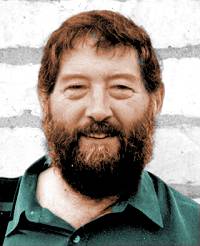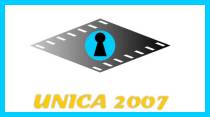
|
The world of non-commercial film and A-V |
Events Diary | Search | ||
| The Film and Video Institute | | ||||
Photos |
Nouvelles |
Zeitungsartikel |
Announcements | Front
page
- Bears and Lions in Austria - Dave Watterson
- Draft Agenda for the General Assembly 2007
- The Korea Train Project - Erich Riess & Franz Schlager
- Slovakia and Liptovsky Mikulas
- UNICA Committee Meeting 13-15 April 2007 - Max Hänsli
With great sorrow we inform you of the death, on Saturday 27 of January 2007, of Josep-Jordi Queraltó Torner, Spanish delegate to UNICA since 1971.
- Pere Parera, Centre Excursionista de Catalunya
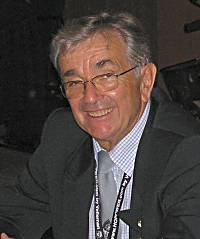 UNICA COMMITTEE
MEETING 13 - 15 April 2007
UNICA COMMITTEE
MEETING 13 - 15 April 2007
The meeting - arranged in parallel with a get-together of the Friends of UNICA - took place in Thun, Switzerland. The organisation was in the hands of two families - the Brüggers and the Grabers - who had prepared a very interesting programme for all participants. Thank you very much for the initiative and entertainment.
The UNICA Committee - among other things - examined the following items on the agenda:
Films from the UNICA competition
A poll returned a nearly unanimous result : the films selected from the national programmes in the UNICA Competition for distribution should be presented in DVD format (120 minutes).
Formats accepted for the UNICA Competition
National federations are kindly requested to provide films to be screened for the Competition exclusively in "miniDV" and not in DVD format. So far as possible put only one film on each cassette. All necessary information should appear clearly on the cassette(s), in legible script in one of the UNICA languages (German, French, English). Film duration should also be indicated. Please make sure that the UNICA organisers have no doubt about which film is contained in the cassette.
Revision of UNICA Statutes
George Fondeur (Luxemburg) submitted a draft revision of the Statutes which will be now be submitted to additional examination by Committee members before being dispatched to national federations. This draft will then be submitted for examination by national federations and eventually go to a vote at the General Meeting in 2008 (Tunisia). Sincere thanks to George Founder (attending in Thun) for this comprehensive work.
Tasks of the Jury during UNICA Congresses
The heavy burden resting on the jury is a difficult issue. It was decided the system with three-member panels (composed of jury members) discussing the films after screening national programmes should be abolished. This leaves the jury more time for their internal discussions and decisions about which films should be brought to the final public discussion at the end of the UNICA Congress. To compensate for this change, we will re-introduce discussions with the audience conducted by a moderator - such as existed a few years ago.
The other important innovation concerns the so-called "second chance" round where each jury member may ask the jury to raise the rating of one specific film. Now this can only be applied to a film which got at least 4 positive votes in the first round. Lastly: the jury can select a film for the public jury meeting only if their internal voting returned a 5:2 majority in its favour.
The UNICA 2007 Congress in Slovakia
Zuzana Školudová, the president of the organising committee also attended the meeting in Thun. She provided detailed information about the number of participants who have registered (at that time 150), the programme and technical arrangements. All possible efforts will be made in Slovakia to make sure that the event is a great success. Concerning transport from Bratislava (or Vienna, AUT) up to Liptovský Mikuláš, the people registered will receive all necessary information in due time. Zuzana asks all national federations to advertise and promote the event among their members. Moreover, Slovakia is a first rate tourist destination and UNICA is an excellent opportunity to discover this region of the country.
UNICA 2008 in Tunisia (28th June to 6th July)
A Tunisian delegation is expected to come to the UNICA 2007 Congress and provide information about the preparations. for UNICA 2008 in Tunisia. Obviously such data as the cost of accommodation and the congress card are important to us. We also hope that the delegation will bring along to Slovakia informative documentation for proper advertising of the Congress in Tunisia.
UNICA 2009 in Poland
This was also raised and Stani Puls mentioned that it could be held this time on the Baltic sea in or near Gdansk (Danzig). The site will surely be very attractive to many people. We will probably have more information at the UNICA 2007 Congress.
The future of UNICA
The UNICA Committee has examined the issue of the future of UNICA. Though we are still in 2007 and the next committee elections are in 2009, some preliminary decisions have been made and these are likely to bring about some changes. One important issue is providing training to future committee members. Considering that not only the Statutes, but also various articles of regulation had to be revised and updated, it was suggested that Georges Fondeur (Luxemburg) be appointed as an assessor member in the Committee. This position will obviously make his task of clarifying pending issues much easier. The committee members will have to decide in the course of 2008 who among them would like to withdraw at the 2009 General meeting. It will thus be possible to solve problems in due time and ensure a smooth transition in the various committee positions.
Though the agenda was rather heavy, Committee members were still able to participate in an excursion in the Swiss Alps which turned out to be most pleasant with an interesting programme blessed with exceptionally nice weather.
Max Hänsli (CHE), UNICA President
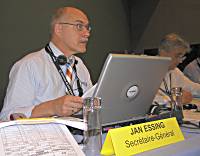 |
AGENDA FOR THE GENERAL
ASSEMBLY UNICA 2007 (DRAFT)
|
- Opening address by the President of the Congress
- Verification of the delegates' authorities by the Secretary General
-
Constitution of the bureau:
- chairman of the meeting (proposal: Max Hänsli)
- secretary (proposal: Jan Essing)
- 2 scrutineers - Confirmation of the agenda
- Vote on the proceedings of the General Assembly UNICA 2006 in Kyongju-City (KOR)
- Address by the President of UNICA (will be read)
- Report of the Committee by the Secretary General
- Report of the Treasurer
- Report of the Auditors (will be read)
- Report of the Film librarian
- Report of "Friends of UNICA"
- Report of UNICA Patronages
- Report of the delegate to I.F.T.C.
- Report regarding UNICA Web
- Admission of new members
- Discussion and vote about proposals of the Committee
- Discussion and vote about proposals submitted by members
- Determination of next year's contribution
- Confirmation of the budget
-
Selection of the place and dates of the Congress in the years:
2008: Hammamet (TUN),
2009: (POL) - Discharge to the Committee
- List of Candidates of the UNICA-Committee
- Election of the UNICA-Committee
- Farewells
- Election of a new auditor
- Miscellaneous, without vote.
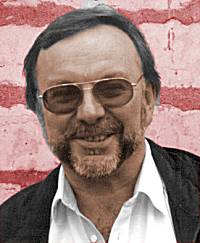 Dear Friends of UNICA ...
Dear Friends of UNICA ...
THE KOREA TRAIN PROJECT
- September 01 to 09, 2007
There are constant questions about the Korea Train Project, therefore I will try to clarify matters in few words.
The purpose of the project is:
- To present the term "amateur film" in a positive way and to improve the image of "amateur filmers".
- To spread the name UNICA and thereby to win new, and above all young, members for UNICA.
The project can only work with the help of the mass media. In order to attract television, internet and newspaper interest, this journey is made as a large multinational event. About 50 video cameras will transmit details of the journey via satellite 24 hours a day live to national TV-stations. The project will also make clear that it is not a tourist trip.
Our potential lies in the fact that we offer the event as a première, a unique and remarkable event, which according to the usual rules of journalism should be of interest to international mass media. Now, the first freshness of the idea is past, and we cannot help that. But there is the chance to make the journey in 2007 if our Korean friends take up this idea and travel from their country to Europe, to the UNICA in Slovakia. We Europeans could fly to Vladivostok and from there share the trip with our friends from Korea. That would strengthen and deepen the family and friendly atmosphere of UNICA.
The logistical preparations are done, sponsors will come on board, it is only necessary for us now to act - nothing happens by itself. Or as one Austrian says so beautifully: "From nothing comes nothing! " - from the talk by Erich Riess when meeting the Friends of UNICA in Korea during 2007.
Erich Riess & Franz Schlager <eva-video@netway.at >
In the cinema, bar, hotels, cafes, by the lake … everywhere in Ebensee, a small town in Austria, jurors, authors and audience discussed movies together. Is there another film festival like The Festival of Nations?
In 2007 nearly 900 films competed for the toy teddy-bears which are the festival prizes. 130 were selected for showing to the jury. The standard was very high. Film students and true amateurs competed together.
The people are what makes the event so special. The audience are authors and experienced film viewers, many of them are regular UNICA delegates. They are quick-witted, enthusiastic and good-humoured. The festival staff are special: volunteer adults preparing meals and serving drinks, students from the Fadinger Schule in Linz handling the technical tasks and translations. They give the festival a real buzz.
The five person jury had one Austrian, two Czechs, one Swiss and one Scot. They were joined by guest jurors through the week who commented on the films but did not take part in the final voting. After a film block of about 90 minutes the jury went on stage to discuss the films with each other, the author and the audience. There were no time limits - except to make sure we did not miss refreshment breaks. There was a special evening for "shorties" - films under 5 minutes long. There was also a special session for films from schools where we saw work from the next generation of authors.
Four times during the week the entire team moved to the nearby lake to enjoy the hot weather and have a picnic lunch. There was a Bunter Abend which mainly featured amateur performers but this year also had a special high-energy performance from guest juror Hans Kreuzmayer, better known as "Waterloo" from the singing group "Waterloo and Robinson". The mid-week excursion was by cable-car to the local mountain peak. Festival Director, Erich Riess, had organised a treasure-hunt up there. The highest score was for anyone who found a lion. It seems a lion escaped from a circus and may be hiding in the mountains. The reward for its capture would solve the festival's perennial financial problems.
Next year's festival is 15th - 21st June. Make a note of it in your diary!
Dave Watterson (GBR)
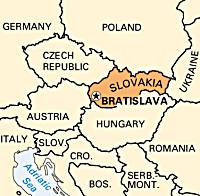 Slovakia is located in central Europe. The land has rugged
mountains, rich in mineral resources, with vast forests and pastures. The
Carpathian Mountains dominate the topography of Slovakia, with lowland areas
in the southern region. Present-day Slovakia was settled by Slavic Slovaks
about the 6th century. They were politically united in the Moravian empire
in the 9th century. In 907, the Germans and the Magyars conquered the Moravian
state, and the Slovaks fell under Hungarian control from the 10th century
up until 1918. When the Habsburg-ruled empire collapsed in 1918 following
World War I, the Slovaks joined the Czech lands of Bohemia, Moravia, and
part of Silesia to form the new joint state of Czechoslovakia. In March 1939,
Germany occupied Czechoslovakia, established a German "protectorate," and
created a puppet state out of Slovakia. The country was liberated from the
Nazis by the Soviet army in the spring of 1945, and Slovakia was restored
to its prewar status and rejoined to a new Czechoslovakian state.
Slovakia is located in central Europe. The land has rugged
mountains, rich in mineral resources, with vast forests and pastures. The
Carpathian Mountains dominate the topography of Slovakia, with lowland areas
in the southern region. Present-day Slovakia was settled by Slavic Slovaks
about the 6th century. They were politically united in the Moravian empire
in the 9th century. In 907, the Germans and the Magyars conquered the Moravian
state, and the Slovaks fell under Hungarian control from the 10th century
up until 1918. When the Habsburg-ruled empire collapsed in 1918 following
World War I, the Slovaks joined the Czech lands of Bohemia, Moravia, and
part of Silesia to form the new joint state of Czechoslovakia. In March 1939,
Germany occupied Czechoslovakia, established a German "protectorate," and
created a puppet state out of Slovakia. The country was liberated from the
Nazis by the Soviet army in the spring of 1945, and Slovakia was restored
to its prewar status and rejoined to a new Czechoslovakian state.
Nearly 42 years of Communist rule in Slovakia ended when Vaclav Havel became president of Czechoslovakia in 1989 and democratic political reform began. However, with the demise of Communist power, a strong Slovak nationalist movement resurfaced, and the rival relationship between the two states increased. By the end of 1991, discussions between Slovak and Czech political leaders turned to whether the Czech and Slovak republics should continue to coexist within the federal structure or be divided into two independent states.
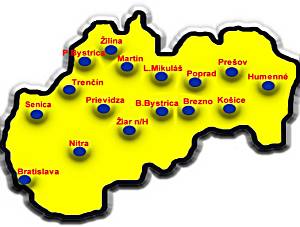 After the general election in June 1992, it was decided that
two fully independent republics would be created. The Republic of Slovakia
came into existence on Jan. 1, 1993. The parliament in February elected Michal
Kovac as president.
After the general election in June 1992, it was decided that
two fully independent republics would be created. The Republic of Slovakia
came into existence on Jan. 1, 1993. The parliament in February elected Michal
Kovac as president.
Vladimir Meciar, who served three times as Slovakia's prime minister, exhibited increasingly authoritarian behavior and was cited as the reason Slovakia was for a time eliminated from consideration for both the EU and NATO. Slovakia's very low influx of foreign capital during Meciar's tenure was the result of his government's lack of transparency. Meciar was unseated in 1998 elections by the reformist government of Mikulás Dzurinda.
Dzurinda has improved Slovakia's reputation in the West, but his tough economic measures have made him unpopular within the country. Former prime minister Meciar has proven oddly resilient. In Sept. 2002 elections, the ruling coalition held onto power, despite Meciar coming out ahead in the vote. In April 2004, Meciar ran for the presidency against his former right-hand man, Ivan Gasparovic. Gasparovic, however, won the largely ceremonial post by a wide majority. In 2004, Slovakia joined the EU and NATO. In May 2005, it ratified the EU constitution.
THE TATRA MOUNTAINS
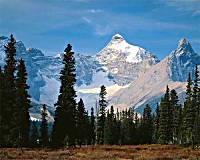 The Tatras form a natural frontier between Slovakia and Poland.The
Tatra Mountains area spreading 786 sq. km,550 sq.km in Slovakia, are abundant
in natural monuments, rich and individual fauna and flora species
The Tatras form a natural frontier between Slovakia and Poland.The
Tatra Mountains area spreading 786 sq. km,550 sq.km in Slovakia, are abundant
in natural monuments, rich and individual fauna and flora species
Tatras also offer optimal conditions for the devotees of extreme sports and alpine tourism.The visitors must,for security sake, observe the Visiting Order of the Tatra Mountains. We must not forget another important phenomenon:the alpine air. In the 19th century Mikulas Szontagh discovered its extraordinary curative effects, and established climatic sanatoriums in Novy Smokovec, which welcomed its first balneal guests in 1876. These sanatoriums became very popular with guests from all over Europe. Many therapeutic facilities specializing in the treatment of the upper airways, bituminosis and pneumonic surgery are situated in the Tatras.
LIPTOVSKÝ MIKULÁŠ
The city Liptovský Mikuláš is situated right in the middle of the Liptovská kotlina (Liptovská Basin) on the way from Žilina to the Vysoké Tatry (High Tatras). It is a very suitable starting point if you want to go to the Západné Tatry (Western Tatras) or to the Nízke Tatry (Low Tatras).
Historically, this area was already inhabited during the Bronze Age, which was proven by archaeological findings of bronze instruments. A burying ground from the 11th and 12th century was found here, too. The first written reference about the city is from the year 1286. At that time it was a town of yeomen. The first royal privileges it gained in the 14th and 15th century: such as the right to organise annual as well as weekly open markets. In 1677 it became the main seat of the Liptov County. Juraj Jánošík (the Robin-Hood-like Slovak national hero) was executed here in 1713.
In the middle of the 19th century the town became a centre of the Slovak national cultural activities. They were based on old cultural traditions and activities of Juraj Tranovský (Tranoscia) in the 17th century, of Gašpar Fejérpataky-Belopotocký, Michal M. Hodža, Matúš Blaho and others from the group around L'udovít Štúr in the 19th century. This group founded a literary and editorial association - Tarín. By the end of the 19th and the 20th century the Slovak cultural life developed rapidly in this city (new associations, theatres and editorial activities were founded). National movement culminated on May 10, 1848 by the declaration of "Requests of the Slovak Nation".
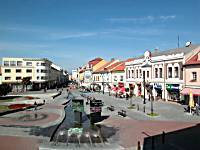 At
the oblong central square, there are houses of yeomen from the 16th and 17th
century (Pongrácova kúria, Seligovský dom - nowadays
a museum of Janko Král', a County House and a Roman-Catholic church
of St. Mikuláš). The church was built around the year 1280 on
the ruins of another building. During the second half of the 15th century
it was rebuilt and enlarged. In the 18th century it gained some Baroque features,
but after the fire in 1883 it had to be totally repaired. Some gothic vaults,
windows, portals, pastrophorium, and a part of original interior. The main
neogothic altar has original gothic painted wings from the years 1500 - 1510
and a statue of a saint. Between 1783 - 1785 an Evangelic classicistic church
with late-roman facade was built in the city. In 1833 - 1885 it was repaired
and a new tower was added.
At
the oblong central square, there are houses of yeomen from the 16th and 17th
century (Pongrácova kúria, Seligovský dom - nowadays
a museum of Janko Král', a County House and a Roman-Catholic church
of St. Mikuláš). The church was built around the year 1280 on
the ruins of another building. During the second half of the 15th century
it was rebuilt and enlarged. In the 18th century it gained some Baroque features,
but after the fire in 1883 it had to be totally repaired. Some gothic vaults,
windows, portals, pastrophorium, and a part of original interior. The main
neogothic altar has original gothic painted wings from the years 1500 - 1510
and a statue of a saint. Between 1783 - 1785 an Evangelic classicistic church
with late-roman facade was built in the city. In 1833 - 1885 it was repaired
and a new tower was added.
In the city there is also a classicistic synagogue (built between 1842 - 1846, repaired in 1906), a memorial of Janko Král', and a picture gallery of P. Bohún.
The beautiful nature of Liptovská valley is delimited by High and Low Tatras, Choc mounatins and offers its visitors many winter and summer activities. The biggest and the best ski centre is Jasná in Low Tatras. It can satisfy all your demands for winter sports but there are other ski centres such as SKI PARK RUŽOMBEROK and many other smaller centres nearby.
In the Demänovská dolina (Demänovská Valley) there are two grottos caves - Demänovská Cave of Freedom, Demänovská Ice Cave, Važecká Ice Cave is about 30 km from Liptovský Mikuláš (direction Poprad).
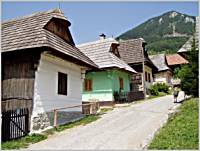 Havránok. Havránok is an open-air
archaeological museum and a natural cultural monument. As part of the exposition
there are reconstructions of Celtic buildings and a medieval fort. The most
attractive sight, however, is the Museum of LiptovVillage in Pribylina. In
Kvacianska dolina (Kvacianska Valley) there is a unique and ancient wooden
water mill called Oblazy. If you visit Prosiecka dolina (Prosiecka Valley),
you should not miss beautiful waterfalls. Liptov is a region with a rich
history, typical folklore and folk architecture examples of which you can
find in town's museums and galleries. A more realistic picture of folk
architecture is presented in the Museum of Liptov Village in Vlkolínec
(which is also listed on the UNESCO list of the world cultural and natural
heritage) and unique wooden articular church in Svätý
Kríž.
Havránok. Havránok is an open-air
archaeological museum and a natural cultural monument. As part of the exposition
there are reconstructions of Celtic buildings and a medieval fort. The most
attractive sight, however, is the Museum of LiptovVillage in Pribylina. In
Kvacianska dolina (Kvacianska Valley) there is a unique and ancient wooden
water mill called Oblazy. If you visit Prosiecka dolina (Prosiecka Valley),
you should not miss beautiful waterfalls. Liptov is a region with a rich
history, typical folklore and folk architecture examples of which you can
find in town's museums and galleries. A more realistic picture of folk
architecture is presented in the Museum of Liptov Village in Vlkolínec
(which is also listed on the UNESCO list of the world cultural and natural
heritage) and unique wooden articular church in Svätý
Kríž.
In Liptov you can find many mineral springs, especially thermal ones. A very attractive water park 3 km from Liptovský Mikuláš is Aquapark Tatralandia which offers several thermal pools and many other attractions for children and families. It is open all year round. A little smaller and a little quieter is a thermal park Bešenová. In the summer, you can enjoy swimming, sunbathing, water sports and fishing on the beaches of a dam Liptovská Mara.
An historical centre of the town of Liptovský Mikuláš, has recently been reconstructed. There is a new pedestrian zone where people can walk round the town, enjoy sightseeing and sitting in the little coffee bars.
Share your passions.

Share your stories.
